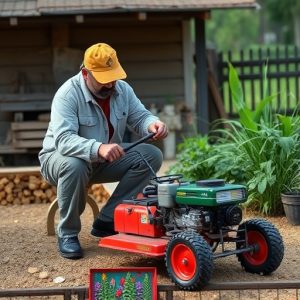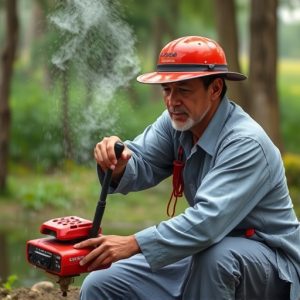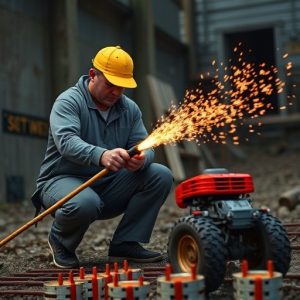Mastering Kubotan Self-Defense: History, Techniques, and Advanced Tactics
The Kubotan is an essential self-defense tool in martial arts, particularly within Eskrima, valued …….
The Kubotan is an essential self-defense tool in martial arts, particularly within Eskrima, valued for its precision and effectiveness in pressure point techniques. This compact device, marked by its short, thick design and blunted end, allows users to strike with accuracy or neutralize an attacker by targeting sensitive nerve centers. Mastery of the Kubotan involves a deep understanding of human anatomy, leverage, and pressure points, and requires dedicated practice that simulates realistic confrontations. It's important to learn how to use a Kubotan correctly to ensure it serves as an effective extension of one's self-defense capabilities in close-quarters situations. The article highlights the importance of integrating the Kubotan into martial arts training for both personal safety and professional applications like law enforcement, emphasizing that proficiency with this tool can be a critical component of one's self-protection skill set.
Exploring the intricate world of self-defense, this article delves into the Kubotan—a versatile and potent tool for personal protection. Originating from the Filipino martial arts and further refined by instructor Frank Karszewski in the 1960s, the Kubotan’s application spans beyond a mere self-defense instrument to an art form. Herein lies a comprehensive guide on how to use a kubotan effectively, from its historical roots to advanced techniques that blend strikes with control moves for unparalleled self-protection. Mastery of the Kubotan is not just about wielding this tool; it’s an embodiment of skill and strategy essential for one’s safety. Join us as we break down the essence of Kubotan techniques, ensuring you are well-equipped to handle confrontational situations with confidence and control.
Mastering the Kubotan: An Overview of Its History and Application
The Kubotan is a self-defense tool that has gained prominence within martial arts circles, particularly in the context of self-defense and pressure point techniques. Originating from the Filipino Martial Art of Eskrima, the Kubotan’s design is simple yet effective—a short, thick stick with a cap on one end. This design allows for a variety of applications, from striking to controlling an adversary, often targeting vital areas to incapacitate an attacker. Its use extends beyond mere physical impact, as it can be employed to apply precise pressure on nerve centers, rendering an assailant immobile.
Mastery of the Kubotan requires a deep understanding of its potential and a commitment to practice. The history of the Kubotan is intertwined with the evolution of martial arts, where it has been refined over generations. Today, its application goes beyond traditional combat scenarios; it is also used in law enforcement and self-defense training programs. Proponents of the Kubotan emphasize the importance of learning how to use a Kubotan effectively, which involves not only physical technique but also an understanding of human anatomy and the principles of leverage and pressure points. Training typically includes drills that simulate real-world confrontations, ensuring that practitioners are prepared to respond to threats in a manner that is both proportionate and protective. Mastery of the Kubotan is not just about possessing the tool; it’s about developing the skill set necessary to use it as an extension of one’s own body and mind in defense of oneself or others.
The Essence of Kubotan Techniques: A Step-by-Step Guide for Self-Defense
Advanced Kubotan Tactics: Combining Strikes and Control Moves for Effective Self-Protection
When faced with an adversary, the Kubotan — a short, thick stick designed for close-quarters self-defense — offers users a versatile tool for both striking and controlling. Proficiency in its use extends beyond basic maneuvers to include advanced tactics that integrate strikes with control moves, creating a formidable arsenal of defensive strategies. To effectively harness the Kubotan’s potential, practitioners must understand how to position it for maximum impact while maintaining control over their attacker. Advanced techniques often involve combining precise striking points with leverage and angle manipulation to neutralize threats. These combined strikes can target vulnerable areas of an assailant’s anatomy, such as the eyes, nose, throat, and pressure points, rendering them incapacitated.
Mastering these advanced Kubotan tactics requires a deep understanding of biomechanics and anatomy, allowing for precise execution of techniques that can control or subdue an attacker with minimal force. It’s crucial to practice these methods under the guidance of a skilled instructor who can provide feedback on form, timing, and precision. By integrating strikes with control moves, individuals can effectively use a Kubotan for self-protection in situations where distance cannot be maintained or escape is not an option. Knowledge of how to use a Kubotan effectively in these scenarios can be the difference between succumbing to violence and safely navigating a threatening encounter.


